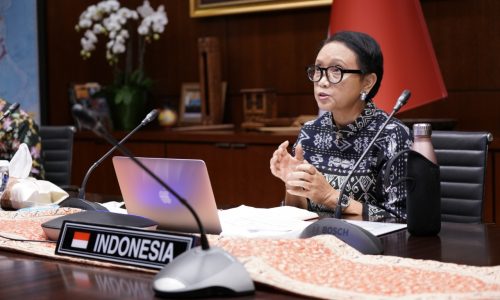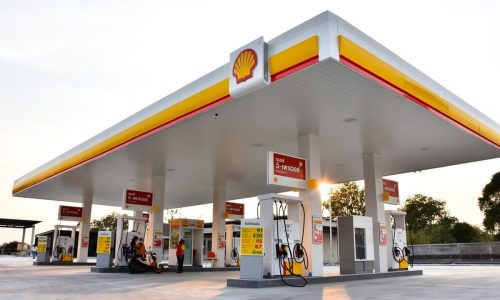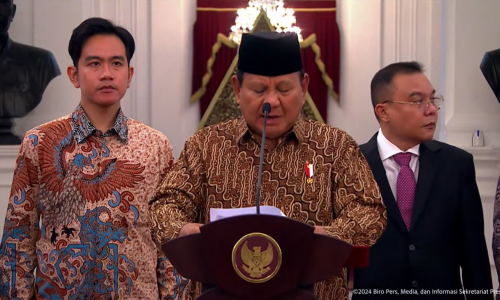Jakarta, June 1, 2024 − A new report by the Global Energy Monitor (GEM) reveals that the expansion of gas-fired power plants and liquefied natural gas (LNG) import-export facilities in Southeast Asia, including Indonesia, will keep the region dependent on volatile fossil fuels and simultaneously reduce renewable energy investment in the region.
The report, titled Southeast Asia’s Energy Cross Roads: The Cost of Gas Expansion versus the Promise of Renewable, says that Indonesia has the potential to become a full gas importing country by 2040. Indonesia does have the third-largest gas reserves in the Asia Pacific, but its gas production continues to fall after peaking in 2010. On the other hand, domestic gas utilization has now surpassed export volumes, and is expected to rise to 24 percent in the 2050 energy mix. By then, Indonesia’s gas imports are projected to touch more than 30 percent of total demand as the country plans to expand its gas infrastructure.
GEM data shows that there are 14 gigawatts (GW) of gas-fired power projects in development, with nearly 5 GW of them entering construction. As the world’s sixth largest LNG exporter, Indonesia has 23 million ton per annum (mtpa) of LNG export facilities in operation and 12 mtpa under development. Indonesia has the largest LNG import facility in Southeast Asia with a capacity of 15 mtpa in operation and 2.3 mtpa under development.
Indonesia is not the only one in Southeast Asia with massive gas infrastructure expansion. GEM noted that a total of 100 GW of gas-fired power plants, 47 mtpa of LNG import facilities, and 16.7 mtpa of LNG export facilities are under development in Southeast Asia. These facilities cost US$220 billion to build. Indonesia along with Vietnam, the Philippines, Malaysia and Thailand are at the forefront of this expansion.
In fact, according to the GEM report, Southeast Asia could fulfil its energy growth with renewable energy, which is increasingly competitive and has lower emissions than gas. The average levelized cost of electricity (LCOE) of solar energy in Southeast Asia is currently around US$70-95/megawatt hour (MWh) and wind energy US$105-135/MWh, compared to gas at US$80-125/MWh. The cost of solar and wind energy is expected to drop significantly if Southeast Asia successfully develops solar and wind energy on a massive scale.
Southeast Asia’s solar and wind energy development plans, if successfully built, would generate 450 terawatt hours (TWh) of electricity per year, equivalent to two-thirds of the region’s projected electricity demand by 2030. In addition, GEM emphasized, the development of domestic renewable energy with energy storage batteries offers Southeast Asian countries the opportunity to be free from the pressure of gas price movements in the global market.
“Energy demand continues to rise across the region as economies grow, but increasing gas production is not a long-term solution. Meeting demand with more cost-effective renewable energy will insulate the region from volatile gas prices, and is a greener path forward,’ Warda Ajaz, Project Manager for Asia Gas Tracker, said in a statement on June 1, 2024.
JETP Funding
The GEM report says that international financial institutions play an important role in the development plans of gas facilities in Southeast Asia. Various existing funding mechanisms make it difficult for Southeast Asia to transition away from fossil fuels. For example, the Just Energy Transition Partnership (JETP) aims to provide financial assistance for coal-dependent developing countries to switch to clean energy.
However, Indonesia and Vietnam, which have launched JETP initiatives, will instead use this funding to develop gas infrastructure. Indonesia’s JETP proposal includes plans to convert diesel-fuelled power plants to gas, despite the issue of gas emissions. Meanwhile, Vietnam plans to build gas-fired power plants to replace coal-fired ones.
The JETP mechanism, with the aim of building an equitable energy transition, authorizes each country to set strategies towards a cleaner energy system. However, without clear boundaries, the JETP mechanism provides perverse incentives that lock Southeast Asian countries into gas dependency. In fact, international funding could have supported the development of solar and wind projects, and improved the stability of the regional electricity grid.
Moreover, through bilateral funding, Japan is one of the largest financiers of gas projects in Southeast Asia. Four Japanese banks − Japan Bank for International Cooperation (JBIC), Sumitomo Mitsui, Mizuho Financial Group, and Mitsubishi UFJ − provided a total of US$9.7 billion in financing in the last decade. The move was signalled as an effort to secure Japan’s energy security and help Japanese utilities sell excess LNG cargo contracts as domestic demand falls.









